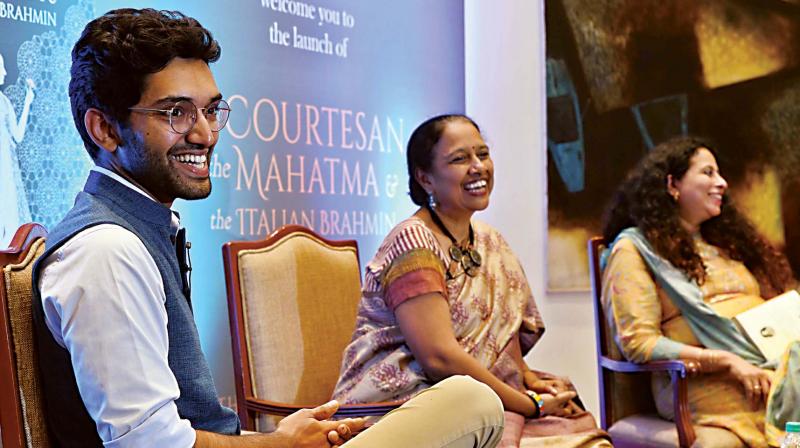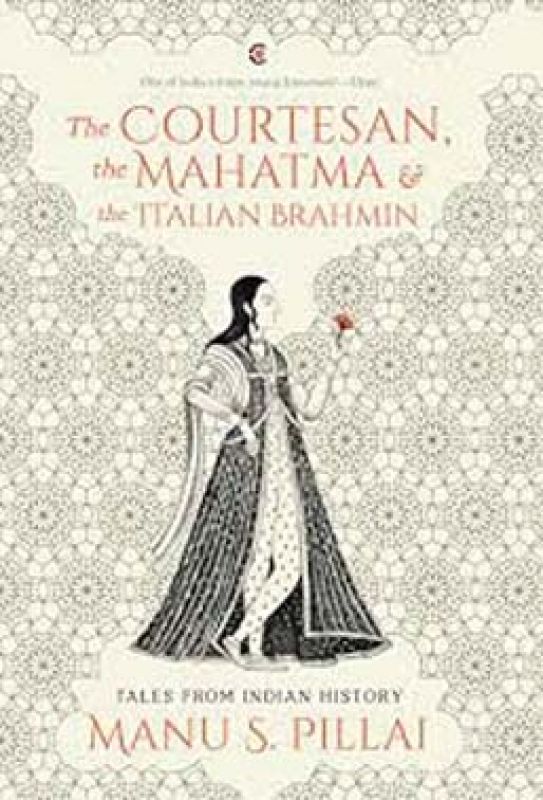Courting the past, through the eyes of history’s women
In the midst of all these tidbits from history is one ruminative piece on Mahatma Gandhi...

The lanky, bespectacled young man, unusually reserved for someone of his age and degree of accomplishment, usually clutching a copy of one of his books (which look like they could outweigh him), could pass more easily for a college student than a historian, who one imagines, bizarrely, ought to resemble a relic of the very times he describes. When Manu S. Pillai writes, or speaks, for that matter, the initial surprise gives way at once to a gaping admiration. This dude knows his stuff. Now, he returns every year, almost to the date, to gallery g on Lavelle Road, to launch a new book, to a full house and an enthusiastic, ever-growing audience. If history can conjure up this much excitement among the youth today, it wouldn't be too far-fetched to say Manu S. Pillai is one of the reasons why. Put him on stage for an hour to talk about his favourite subject (no prizes for guessing) and he does so at top speed, barely seeming to pause for breath. Otherwise, he is reserved: asking him how he finds these fascinating tales is met with a clipped, “It’s my job!” He doesn’t realise, until he is nudged gently, that he is expected to be descriptive, to talk about himself for once. He does so then, but gingerly. As an audience member described later, “Manu takes me back to my own childhood in Kerala, he reacts to the visuals, the imagery...” As it turns out, Manu’s own journey is similar, beginning, in a manner of speaking, at home – “Curiosity about my own colourful ancestors and the world they lived in. A great-great grandmother who flung a log of fire at an elephant; great great grandmother’s tragic romance; haughty great uncles and so on...”
In a freewheeling interview with Darshana Ramdev, Manu talks about the lessons history has taught him. The courtesans, the radicals, the eccentric sultans and the underdog - these are the figures who find a voice in Manu's accounts of Indian history, for, as he puts it in his book, "history continued to be written by unforgiving men.” Here, history is more an insight into mankind itself, of the strengths and foibles that make up every man, and less about the names, dates, and catalogue of stupas that make up the mainstream approach to the subject. Unravel it he does, with the detached wisdom only a true scholar can possess.

The book covers a large cross-section of Indian history. What is the intention behind the collection?
The intention is simply to present Indian history as a mosaic of colours as opposed to black and white in which most popular narratives today place the past. For instance, the Courtesan in the title could refer to any one of the half dozen courtesans about whom I write in my essays. Why, I have wondered, is it that Indian history has no dearth of storytellers for kings and conventional (male) heroes, and yet, even today, no one has attempted a history of the subcontinent told through female eyes? In other essays also the idea is to challenge the conventionally presumed. Lord Curzon, for example, is usually remembered as the man who partitioned Bengal and provoked nationalist fury, but he was also the man who ensured that India’s monuments were protected and preserved—once when he found a monument being used as a post office, he had the postmen thrown out at once. So too there are essays on thinkers who articulated the most radical thought—we venerate them as saints and for spiritual ideas, but have conveniently forgotten the real punch in their message. So these are all stories where each is intended to challenge grand narratives, and to remind readers that history is not about linear trajectories but full of layers and endless riches—far more interesting than the dry bones of dates and battles that are contained in our textbooks.
You have said that we tend to view the past through the present, and today's lens is hopelessly mired in a potent mix of religion and politics: a remnant of colonial times, perhaps. It’s time we moved on from it, but how? To quote Mark Twain, "it is easier to fool people than to convince them that they have been fooled."
History sadly has always been used by those in power for their ideologies and ends. It is not all that surprising—history, for instance, holds ingredients with which to justify current political ambitions. Politicians and political interests read history in certain ways because it legitimises their current ideologies and public positions. But that is where the tragedy lies—in buying this version of history, we are projecting our anxieties and insecurities from today onto events from the past, and milking those events to justify present-day actions. The way around this is long and difficult: only history put in context, communicated well, and in the right perspective can correct this. Politics will always continue seeking nourishment from selective readings of the past. Historians, however, must try and stand above it and do things as objectively as they can, also finding ways to communicate this to a larger audience.
You have a fascination for the idea of the courtesan - the highly skilled, beautiful women who received pride of place in the courts of kings. Yet, they became tainted, seen over the shoulder of a restrictive "Victorian piety" as you put it. These ideas did filter down into the Indian social fabric too - how did this happen? How do you see them play out in the national sensibility today?
I think our society, especially in the late nineteenth and twentieth centuries, made an art out of hypocrisy. I am fascinated by courtesans for several reasons, ever since I studied J Devika’s excellent scholarly work on transformations in Kerala society in the colonial era. Courtesans were autonomous, educated women, often self-reliant and creatively inclined. They were women who accomplished much in the arts, but due to the fact that even the most prominent of them did not have a wedding locket around her neck—i.e. she was not a kulastree (“chaste” family woman)—it was as though their work did not count. Balamani of Kumbakonam, in a time when most women were illiterate, founded one of south India’s earliest drama companies; in the eighteenth century Muddupalani composed sensuous poetry that even her critics admitted were of high literary quality; Begum Samru went from dancing girl to protector of the Mughal emperor and ally of the East India Company. Their stories encapsulate remarkable moments in Indian history and tell us a lot about society. But we like men and women, whom we can install on pedestals as gods—the courtesan is not amenable to that. She is made of flesh and blood. She is human. And we cannot handle that. That says more about us than it does about these fascinating women who enriched the past.

